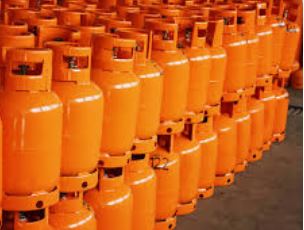Cylinder Specification: Understanding the Key Factors
In various industries, cylinders play a vital role in powering machinery, ensuring precise motion, and maintaining operational efficiency. Proper cylinder specification is crucial for selecting the right cylinder that meets the needs of specific applications.
1. Introduction to Cylinder Specification
Cylinder specification involves understanding the dimensions, materials, and performance characteristics required to meet the specific needs of any application.
1.1 What Is Cylinder Specification?
Cylinder specification refers to the detailed description of a cylinder’s dimensions, materials, and performance characteristics necessary for proper application.
1.2 Importance of Accurate Cylinder Specification
Accurate cylinder specification ensures that the selected cylinder will function effectively, meeting performance requirements without compromising safety or efficiency.
2. Key Dimensions in Cylinder Specification
Understanding the key dimensions in cylinder specification is critical for selecting the correct cylinder size and ensuring proper functionality.
2.1 Bore Diameter
The bore diameter is the internal diameter of the cylinder, determining the maximum force that the cylinder can generate effectively.
2.2 Stroke Length
The stroke length refers to the distance the piston travels within the cylinder, impacting the range of motion available in applications.
2.3 Rod Diameter
The rod diameter is the thickness of the piston rod, influencing the cylinder’s strength and its ability to withstand lateral loads safely.
2.4 Overall Cylinder Length
The overall length of the cylinder includes the length of the piston, rod, and cylinder body when fully extended in operation.
3. Cylinder Material Specifications
Selecting the right materials for a cylinder is essential for ensuring durability, performance, and resistance to environmental factors.
3.1 Steel Cylinders
Steel cylinders are known for their high strength and durability, making them suitable for heavy-duty applications in harsh environments.
3.2 Aluminum Cylinders
Aluminum cylinders are lightweight and corrosion-resistant, making them ideal for applications requiring lower weight and resistance to oxidation.
3.3 Composite Cylinders
Composite cylinders are made from advanced materials, offering a balance of strength, weight reduction, and corrosion resistance in demanding conditions.
3.4 Cylinder Seals and Gaskets
Seals and gaskets are critical for preventing leaks and maintaining pressure, with materials selected based on temperature and fluid compatibility.
4. Performance Specifications of Cylinders
Performance specifications provide insights into how a cylinder will behave under specific operating conditions, ensuring optimal performance and longevity.
4.1 Pressure Rating
The pressure rating indicates the maximum operating pressure that the cylinder can handle without risk of failure or damage to components.
4.2 Temperature Range
The temperature range specifies the minimum and maximum temperatures at which the cylinder can operate without compromising performance.
4.3 Speed and Velocity
The speed of a cylinder refers to how quickly the piston can move within the cylinder, impacting overall system efficiency and cycle time.
4.4 Load Capacity
Load capacity refers to the maximum weight or force that the cylinder can handle, ensuring that it meets application-specific requirements.
4.5 Cycle Life
The cycle life of a cylinder indicates the number of operating cycles it can perform before requiring maintenance or replacement.
5. Environmental Considerations in Cylinder Specification
Environmental factors play a significant role in cylinder specification, affecting material choices and design considerations for optimal performance.
5.1 Corrosion Resistance
Corrosion resistance is critical in environments where the cylinder is exposed to moisture, chemicals, or other corrosive elements during operation.
5.2 Contaminant Resistance
Contaminant resistance ensures that the cylinder can operate effectively in environments where dust, dirt, or other particles are present.
5.3 Temperature Extremes
Temperature extremes require cylinders with materials and seals that can withstand both high and low temperatures without performance degradation.
5.4 Vibration and Shock Resistance
Vibration and shock resistance is essential in applications where the cylinder is subject to sudden forces or constant vibrations during use.
6. Application-Specific Cylinder Specifications
Different applications require specific cylinder specifications to ensure optimal performance, safety, and longevity in various industrial contexts.
6.1 Heavy-Duty Industrial Cylinders
Heavy-duty industrial cylinders require high pressure ratings, durable materials, and robust designs to withstand harsh working conditions.
6.2 Precision Cylinders for Automation
Precision cylinders are designed for automation systems, where accuracy, repeatability, and speed are critical for efficient production processes.
6.3 Medical and Laboratory Cylinders
Medical and laboratory cylinders must meet strict hygiene and precision requirements, with materials selected for safety and chemical compatibility.
6.4 Aerospace and Defense Cylinders
Aerospace and defense cylinders require high-performance specifications, including lightweight materials, high strength, and extreme temperature tolerance.
6.5 Marine and Offshore Cylinders
Marine and offshore cylinders need to resist corrosion and withstand constant exposure to saltwater and harsh environmental conditions effectively.
7. Importance of Custom Cylinder Specification
Custom cylinder specification allows for tailored solutions that meet specific application requirements, enhancing performance and ensuring reliability.
7.1 Why Customize Cylinder Specifications?
Customizing cylinder specifications allows engineers to design cylinders that meet unique operational demands, ensuring optimal performance and safety.
7.2 Working with Manufacturers for Custom Cylinders
Collaborating with cylinder manufacturers ensures that custom cylinders are designed, tested, and built to exacting specifications and industry standards.
7.3 Benefits of Tailored Cylinder Solutions
Tailored cylinder solutions offer advantages such as improved efficiency, reduced downtime, and increased lifespan, providing significant operational benefits.
8. Conclusion: The Vital Role of Cylinder Specification
Cylinder specification is a critical aspect of engineering, ensuring that the selected cylinder meets the demands of the specific application. By understanding the key dimensions, materials, performance characteristics, and environmental considerations, you can make informed decisions that enhance performance and reliability. Whether you’re selecting standard cylinders or customizing specifications, careful attention to detail will ensure that your cylinder performs optimally, providing long-lasting and efficient operation in any industrial setting.

